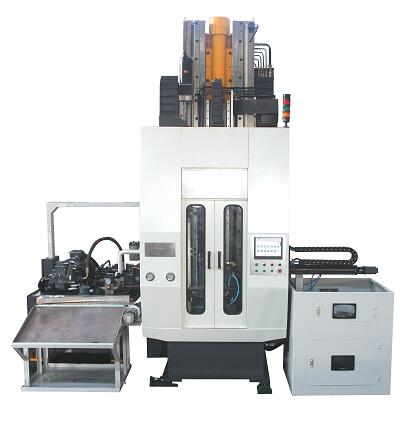
Broaching machines are a critical component in the toolbox of many manufacturers and engineers, enabling high-precision machining that is essential in various industries. These machines are designed for broaching, a process that removes material from a workpiece to shape it into the desired form. From automotive to aerospace, the versatility of broaching machines ensures that they play a vital role in producing complex components with exact specifications.
What is Broaching?
Broaching is a machining process that involves the use of a special tool known as a broach. This tool, which can be either rotary or linear, features a series of cutting edges arranged in a sequence that allows for progressive material removal. Unlike traditional machining methods such as milling or turning, broaching can produce intricate shapes, including keyways, splines, and various profiles more efficiently and with greater precision.
The broaching process can be categorized into two main types: linear and rotary. Linear broaching is often performed on a broaching machine, where the workpiece is moved linearly against the broach. On the other hand, rotary broaching involves the tool's rotation as it cuts into the material, making it suitable for operations on smaller components, typically in lathes or milling machines.
Types of Broaching Machines
Broaching machines can be classified into several types based on their design and operational features:
Horizontal Broaching Machines: These are equipped with horizontal slides that move the workpiece past the stationary broach. They are commonly used for generating keyways and other flat surfaces on larger components.
Vertical Broaching Machines: In contrast, vertical broaching machines have vertical slides, which allows for broaching of smaller workpieces. They are particularly effective for producing internal shapes and profiles.
Spline Broaching Machines: Specifically designed for creating splines in shafts, these machines are crucial in the automotive and machinery industries, where precise fitment is paramount.
Conversational or CNC Broaching Machines: With advances in technology, computer numerical control (CNC) broaching machines have emerged. These machines not only enhance precision but also increase flexibility, allowing for quicker setup and the ability to handle complex machining tasks.
Advantages of Broaching
The advantages of using broaching machines are numerous, making them a preferred choice in precision engineering:
1. High Precision
Broaching machines can achieve tight tolerances that are often not possible with conventional machining methods. This level of precision is vital in industries where components must fit together flawlessly to ensure safety and functionality.
2. Efficiency
Broaching is a highly efficient machining process, allowing for the removal of large amounts of material quickly. This efficiency translates into reduced cycle times and lower production costs, which is essential in a competitive manufacturing environment.
3. Versatility
With the ability to create a wide variety of shapes and profiles, broaching machines can be used for numerous applications across various sectors, including automotive, aerospace, and general engineering.
4. Surface Finish Quality
Broaching typically results in a superior surface finish compared to many other machining processes. This reduced need for further finishing work can save time and costs in production.
Considerations for Broaching Machine Selection
When selecting a broaching machine, manufacturers should consider various factors:
Type of Workpiece: Understanding the material properties, size, and complexity of the components to be machined is essential.
Production Volume: The anticipated production volume will determine whether a high-speed, automated broaching machine is necessary or if a simple manual one will suffice.
Investment Budget: Budget constraints can influence the choice between simpler machines and sophisticated CNC models.
Conclusion
In conclusion, broaching machines are indispensable tools in precision engineering, offering high precision, efficiency, versatility, and excellent surface finishes. As industries continue to demand tighter tolerances and complex shapes, the role of broaching machines will only grow. By understanding their functions and capabilities, manufacturers can better leverage this technology to enhance their production processes and deliver high-quality components to their customers. Whether in the automotive sector, aerospace, or beyond, broaching remains a key process in modern manufacturing.
